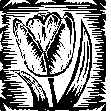 |
Plant Physiology (Biology 327) - Dr. Stephen G. Saupe; College of St. Benedict/ St. John's University; Biology Department; Collegeville, MN 56321; (320) 363 - 2782; (320) 363 - 3202, fax; ssaupe@csbsju.edu |
 |
Plant Physiology (Biology 327) - Dr. Stephen G. Saupe; College of St. Benedict/ St. John's University; Biology Department; Collegeville, MN 56321; (320) 363 - 2782; (320) 363 - 3202, fax; ssaupe@csbsju.edu |
Exam Questions: Cell Unit
Describe the structure and function of the organelles found in "typical" plant
and animal cells (including, but not necessarily limited to, nucleus,
ribosome, ER (rough and smooth), mitochondrion, golgi apparatus, microtubules,
microfilament, intermediate filaments, oleosomes, microbodies, glyoxysomes,
spherosomes, peroxisomes.
Describe the composition, structure and role of cell membranes.
Discuss the structure and function of the various types of plastids. Discuss the origin
of plastids from an ontogenetic (cytoplasmic inheritance) and from a phylogenetic
perspective (endosymbiont hypothesis).
Discuss the structure and roles (function) of the large central vacuole found in plant
cells. Explain why animal cells lack these structures.
Discuss the morphology (structure), chemical composition and role of the plant cell
wall.
Discuss the mechanism of formation of the plant cell wall (be sure to include origin of
wall components, sequence of development).
Describe the cell wall - cell growth paradox. Then, explain how this problem is solved.
In other words, explain how plant cells grow (include cellulose microfibril orientation,
wall loosening, role of protons and IAA)
Describe the structure and function of plasmodesmata. Include a discussion of
intercellular spaces.
| | Top | SGS Home | CSB/SJU Home | Biology Dept | Biol 327 Home | Disclaimer | |
Last updated:
01/07/2009 � Copyright by SG
Saupe